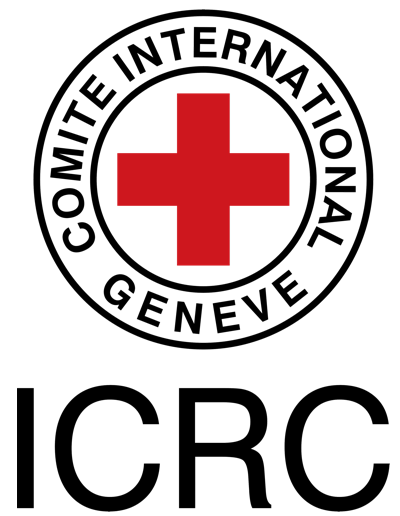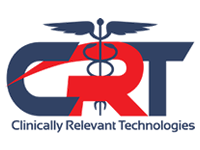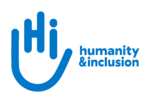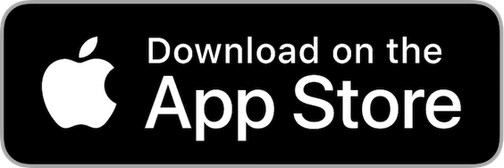Neurological Assessment
Introduction[edit | edit source]
In order to provide the best care and plan the best treatment a thorough assessment must be undertaken. It is the most important step in the rehabilitation process, helps to guide our clinical reasoning and decision when making informed decisions about the rehabilitation process. Johnson & Thompson (1996) outlined that treatment can only be as good as the assessment on which it was based[1]. So in order for us to progress and manage our treatment plan and ensure we are identifying out patients problems the assessment should be an ongoing and continuous process. A neurological assessment focuses on the nervous system to assess and identify any abnormalities that affect function and activities of daily living. It should allow us to create individual, patient-centred goals and ultimately a tailor-made treatment plan based on the client's needs.
So for the proper neurological assessment, we can use a SOAP format as a guide. Below we have a systematic flow for the assessment of the neurological patient.
Subjective Assessment[edit | edit source]
The subjective assessment is used to provide a detailed picture of how the present condition affects the patient. [2]
Demographic Data[edit | edit source]
Name, Age, Gender, Occupation, Dominant hand, Address.[3]
Chief Complain[edit | edit source]
What is his/her present complaint or problem for which he/she has visited you?
History of Present Condition[edit | edit source]
- Progression of the Condition.
- Date of Onset of Signs & Symptoms.
- Medical Management.
- Medical Observations.
- Other management.
- Previous Therapy.
- Results of Specific Investigations (X-rays, CT Scans, Blood Tests.....etc
Past Medical History [edit | edit source]
- Co-morbidities and other non-related conditions.
- Special Equipment, Technology Dependency.
- Previous Surgery.
- Medication History.
- History of any allergies.
Personal History[edit | edit source]
Marital status, occupation,
Activity
- Normal Daily Routine.
- Employment.
- Leisure Activities.
- Smoking and drinking habits.
Mobility
- General
- Indoor
- Outdoor
- Steps & Stairs
- Falls
Personal Care
- Washing
- Continence
- Dressing
Other
- Vision.
- Hearing.
- Swallowing.
- Fatigue.
- Pain.
- Perceptions of own Problems/Main Concern.
- Expectations of Treatment.
Family History[edit | edit source]
Total number of family members, his/her primary caretaker.
Socioeconomic History[edit | edit source]
- Family income source
- Relationship with community people
- Social Situation
- Family Support
- Accommodation
- Social Service Support
Objective Assessment[edit | edit source]
On Observation[edit | edit source]
- Built.
- Gait.
- Pattern of Movement.
- Mode of Ventilation.
- Type/ Pattern of Respiration
- Oedema
- Muscle Wasting
- Pressure Sores
- Deformity
- Wounds
- External Appliances
- Involuntary Movement
- Posture and Balance
- Alignment and attitude of limbs
- Neglect
- Sitting Balance
- Standing Balance
Vital Signs[edit | edit source]
Vitals signs include
- Respiratory rate
- Temperature
- Pulse rate
- Blood pressure
- O2 saturation
On Examination[edit | edit source]
Higher mental function[edit | edit source]
Level of consciousness: Glasgow coma scale (GCS)[edit | edit source]
Communication:[edit | edit source]
Aphasia ( Broca's, Wernicke's, Global)
Cognition:[edit | edit source]
- Orientation:
- Person
- Place
- Time
- Calculation
- Registration
- Attention
- Proverb Interpretation
- Memory
- Immediate
- Recent
- Remote
- Verbal
- Visual
- Language
- Visuospatial proficiency
There are various outcome tools via which we can address his/her cognitive status incorporating various components.[6]
Perception:[edit | edit source]
Common tools to assess perceptual problems are:
- Star Cancellation Test.
- Line Bisection Test.
- Clock Drawing Test.
Cranial nerve (CN) examination[edit | edit source]
Sensory examination[edit | edit source]
Superficial Sensation[edit | edit source]
- Pain
- Temperature
- Touch
- Pressure
Deep Sensation[edit | edit source]
- Movement Sense
- Position Sense
- Vibration Sense
Cortical Sensation[edit | edit source]
- Tactile Localization
- 2 point discrimination
- Stereognosis
- Barognosis
- Graphesthesia
- Texture Recognition
- Double Simultaneous Stimulation
Motor examination[edit | edit source]
Tone[edit | edit source]
- Decreased / Flaccid
- Increased
Spasticity (Clasp-knife)
Rigidity (Cogwheel or Lead Pipe) - Outcome tools- Modified Modified Ashworth Scale (MMAS) and Tardieu Scale
Range of Motion[edit | edit source]
Strength[edit | edit source]
Manual Muscle Testing (MMT) or Myotomes can be used.
Endurance[edit | edit source]
- Muscular
- Cardiovascular
Reflexes[edit | edit source]
- Deep Tendon Reflexes
Biceps (C5/6)
Triceps (C7/8)
Knee (L3/4)
Ankle (S1/2) - Plantar Response (Babinski’s Sign)
Tightness/ Muscle Length Testing[edit | edit source]
Limb length measurement[edit | edit source]
Limb girth measurement[edit | edit source]
Balance (Static and Dynamic)[edit | edit source]
Outcome tools: Berg balance scale, Timed up and go test (TUG), BESTest
Coordination[edit | edit source]
- Equilibrium
- Non-equilibrium
- Romberg's test
Gait[edit | edit source]
- Step Length
- Stride Length
- Base width
- Cadence
- Biomechanical Deviations
Areas of Occupation[11][edit | edit source]
- Basic Activity of Daily Living (feeding, dressing, bathing, grooming)
- Instrumental Activity of Daily Living (Mobility, Budgeting, cooking, cleaning, shopping)
- Education/ Work (Employment, Academics)
- Play/Leisure Activities
- Social Participation (social interaction, community integration)
- Rest/Sleep (sleep hygiene, routine)
Client Factors[edit | edit source]
- Values (choices, actions, priorities)
- Beliefs (cultural, religious perspectives)
- Spirituality
Performance Patterns[edit | edit source]
- Habits
- Roles
- Routine/Rituals
Other System review[edit | edit source]
- Integumentary system: Skin Status, Pressure Sores
- Respiratory system: RS Status, Secretions, Pattern of breathing, Chest wall/Thoracic spine deformity
- Cardiovascular system: Status: Deep Vein Thrombosis
- Musculoskeletal system: Contractures, Subluxations, Joint mobility, Other pathology
- Bowel and bladder function: Urinary Incontinence
- Gastrointestinal system: Status
- Autonomic system: Vasomotor,Pseudomotor, Trophic Changes, Postural Hypotension, Reflex Sympathetic Dystrophy
Functional Assessment[edit | edit source]
- Functional Independence Measure
- Modified Barthel Index
- Canadian Occupational Performance Measure
- Assessment of Motor and Process Skills
- Role Checklist
- Berg Balance Scale
- Kholman Evaluation of Living Skills
Assessment[edit | edit source]
Problem List[edit | edit source]
Problem list can be generated from International Classification of Function, Disability, and Health (ICF).
Physiotherapy Diagnosis/Functional Diagnosis[edit | edit source]
Plan[edit | edit source]
Goal Setting[edit | edit source]
- Short term goal
- Long term goal
Treatment[edit | edit source]
Re-assessment[edit | edit source]
Re-assessment includes re-testing objective measures such as outcome tools after a certain period of intervention. It helps to know the progression of the patient and in the determination of time to achieve the goal set. In re-assessment, it is very necessary to assess both facilitators and barriers for a better outcome. it is vital to let the patient, patient party, and other health professionals know about the result of the re-assessment and compare it with previous assessment results. It helps to plan further in treatment strategies.
References[edit | edit source]
- ↑ Johnson J, Thompson AJ. Rehabilitation in a neuroscience centre: the role of expert assessment and selection. British Journal of Therapy and Rehabilitation. 1996 Jun;3(6):303-8.
- ↑ O'Sullivan SB, Schmitz TJ, Fulk G. Physical rehabilitation.F6th Edition.A Davis; 2019 Jan 25.
- ↑ Neurological Physiotherapy Evaluation Form. Available from: https://fac.ksu.edu.sa/sites/default/files/neurological_physiotherapy_evaluation_form_2_0.pdf. Lasted accessed: 4.3.2021
- ↑ Life Changing Surgery Halts Essential Tremors & Parkinson's Disease Symptoms. Available from: https://www.youtube.com/watch?v=8pGGGMUObQ4 Lasted accessed: 2021.4.3
- ↑ Glasgow Coma Scale made easy. Available from: https://www.youtube.com/watch?v=h2SIN7Mn0YA. Lasted accessed: 2021.4.3
- ↑ Cognition. Stroke engine. Available from:https://strokengine.ca/en/assessments-by-topic/#assess-cog Lasted accessed: 2021.4.3
- ↑ PHYSIOTHERAPY EVALUATION IN NEUROLOGICAL PATIENTS. Ozden Gokcek and Esra Dogru Huzmeli. Hatay Mustafa Kemal University Health Science Faculty, Physiotherapy and Rehabilitation Department,Hatay, Turkey
- ↑ greeky Medics. Cranial Nerve Examination - OSCE Guide (New Version). Available from: https://www.youtube.com/watch?v=sJBpai74tlU. Lasted Accessed: 2021.4.3
- ↑ UBC Medicine - Educational Media. UBC Medicine Neurology Clinical Skills - Motor, Sensory, and Reflex ExaminationAvailable from: https://www.youtube.com/watch?v=5ob5uJMgZOs Lasted accessed: 2021.4.3
- ↑ How to test the Neurological Babinski Reflex for Upper Motor Neurone Lesion. Available from: https://www.youtube.com/watch?v=vkM-xX7KRR4. lasted accessed: 2021.4.3
- ↑ https://pdfcoffee.com/ot-spackman-occupational-therapy-11thpdf-pdf-free.html






